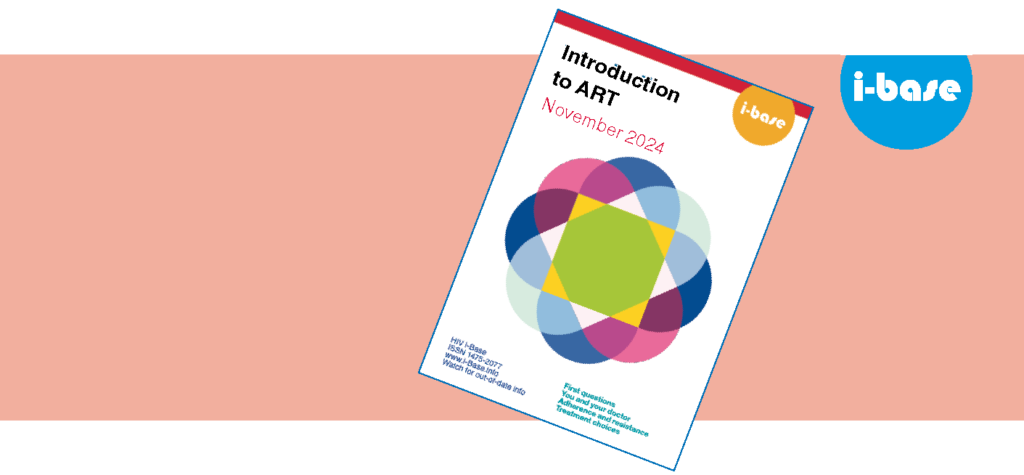Introduction to ART
 This guide includes information about HIV antiretroviral treatment (ART).
This guide includes information about HIV antiretroviral treatment (ART).
It is written and reviewed by HIV positive people and it uses everyday language. November 2024.
Introduction
First questions: what, when, why?
- What is ART and what are ARVs?
- Does ART really work?
- Does everyone need ART?
- How soon do I need to start?
- What about side effects?
- Finding out you are positive
- CD4 and viral load: two essential blood tests
- How is my CD4 count related to my health?
- How does ART work?
- How long will ART work for?
- Can I change drugs?
- Can I stop ART?
- What if I am feeling well without ART?
- What if I am a slow progressor?
- Does ART always work?
- Review your ART every year
- Should I enter a study?
- What about alcohol and recreational drugs?
- What about a cure?
Age, heart disease, gender and pregnancy
- How do children use HIV treatment?
- Does ageing affect ART in adults?
- Age, HIV drugs and heart disease
- Does gender affect ART?
- Transgende people and HIV drugs
- What about treatment in pregnancy?
Deciding when to start treatment
- Is starting easy?
- How soon do I need to start?
- Early diagnosis and primary infection
- Late diagnosis and low CD4s
- Average CD4 count increases on ART
U=U: undetectable = untransmissable
Side effects
- What is the risk of side effects?
- Weight increases on ART
- Metabolic changes and other body changes
- Other side effects and health issues
You and your doctor
Adherence
Drug resistance
- What is resistance?
- How do I avoid resistance?
- How a missed or late dose increases the risk of resistance
Which drugs, which combination?
- Main types of HIV drugs
- What is the best combination?
- HIV life cycle – how drugs work in different ways
- First ART – recommended drug combinations
- The two nukes
- Choice of integrase inhibitor (INSTI)
- Two-drug ART
- Alternative drugs
- Non-standard combinations
- Meds no longer recommended
- Future drugs
- Antiretroviral drugs: illustrated pill chart
- Generic HIV drugs and HIV care in the UK
- Efavirenz: no longer recommended
Additional info
- Your personal treatment history
- Glossary
- Further information
- Tables and diagrams
- PDFs and downloads
- Feedback
- Quotes
- Credits and about out guides
Credits
Written and compiled by Simon Collins for HIV i-Base with thanks to an extended advisory group of HIV positive people and community advocates for comments. Additional thanks to Dr Laura Waters, Dr Tristan Barber and to Neal Marshall at the HIV Pharmacist Group for medical review and comments. Thanks also to Hosanna, Lenny, Matt, Memory, Mike, Nathan, Paul, Polly, Simon, Vladimir, Winnie and Xavi for permission to include quotes from their experience. Design by No Days Off. Funding thanks to The Monument Trust. Not-for-profit copying is encouraged.
About our guides
Information about how we produced this guide and the importance of using language that is direct and easy to understand. This includes information on how to write non technical medical information that may be useful as a resource for other organisations.
Last updated: 1 November 2024.
